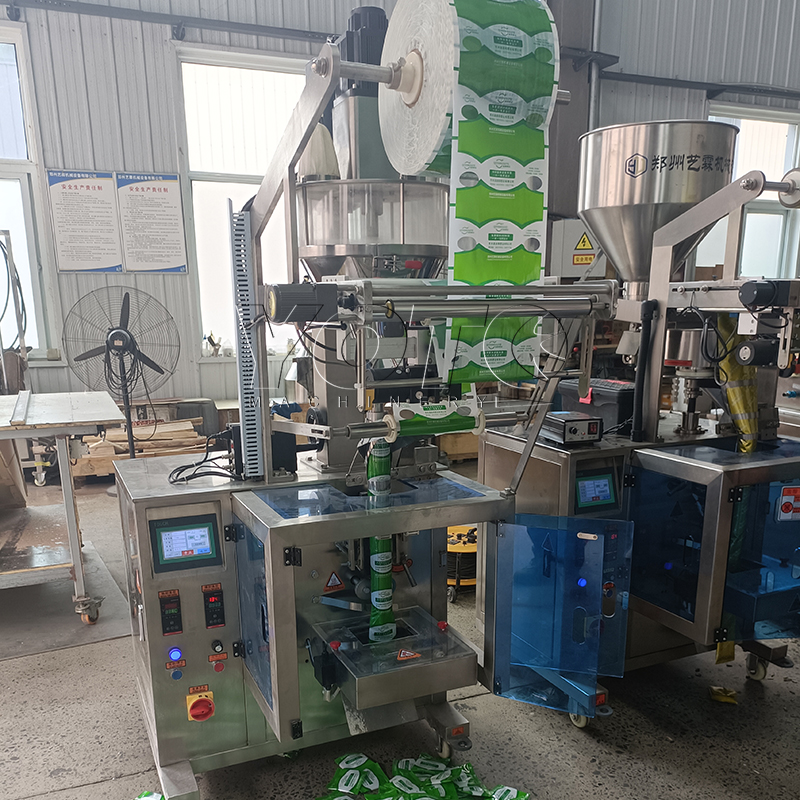How does the packaging machine work?
The operation process of a packaging machine usually consists of the following main steps, from the preparation of raw materials to the output of finished products, each step is precise and efficient to ensure the smooth running of the packaging process.
Material conveying after raw material preparation. The packaging material (e.g. bags, boxes, bottles, etc.) and the product to be packaged (e.g. foodstuffs, pharmaceuticals or other commodities) first need to be conveyed to the input side of the machine. This is usually done through an automatic conveying system to increase efficiency. Packaging machines are equipped with a metering system that accurately measures the amount or weight of product within each packaging unit. The metering system may be an electronic scale, screw feeder, or other type of metering device. Packaging material handling is performed after metering. The packaging material is unrolled from a reel and subjected to a series of mechanical operations (e.g., shearing, folding, heating) to form a shape suitable for packaging. The material is moulded, e.g. plastic film is moulded into bags, boxes, etc. The moulding process usually involves heating and cooling to ensure that the packaging material retains its shape and strength. The measured product is then filled into the packaging material.

The filling method may vary depending on the type of product and the characteristics of the packaging material, such as gravity filling, pump filling or airflow filling. After the product has been filled, the packaging machine closes the packaging material using a sealing system. The closure can be heat-sealed, compression-sealed or glued to ensure the integrity and sealing of the package. Packaging machines are usually equipped with an inspection system to check the quality of the package, including the quantity and weight of the product, and the sealing of the closure. If a problem is detected, the system will automatically alarm or reject the non-conforming product. Next comes labelling and coding. Printing and labelling then takes place: on the outside of the package, the packaging machine may add information such as barcodes, production dates, batch numbers, etc. This information is usually done through a printer or labeller to meet traceability and compliance requirements. Finally, the finished product is output, packaging is collated, and the machine is cleaned.



